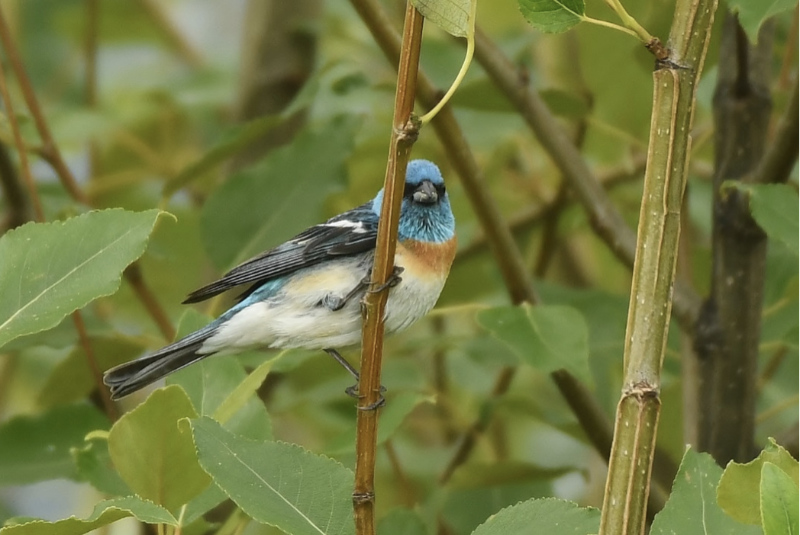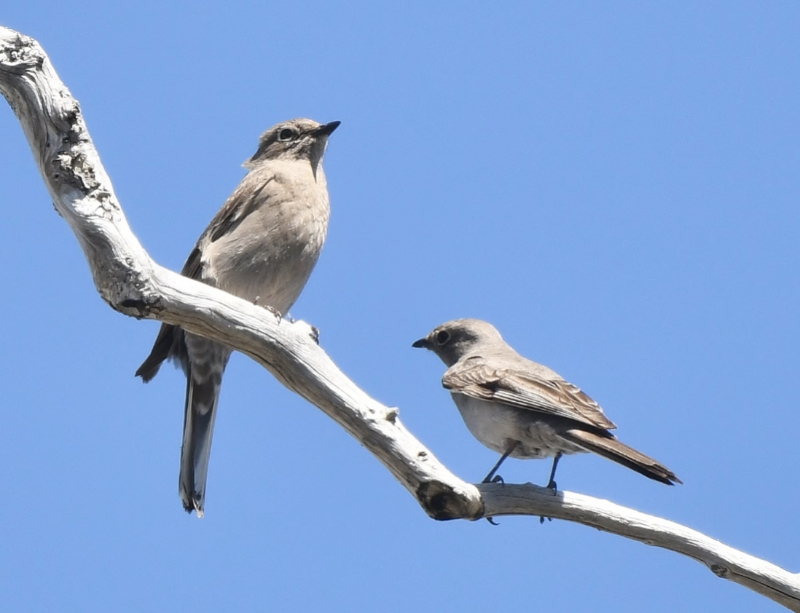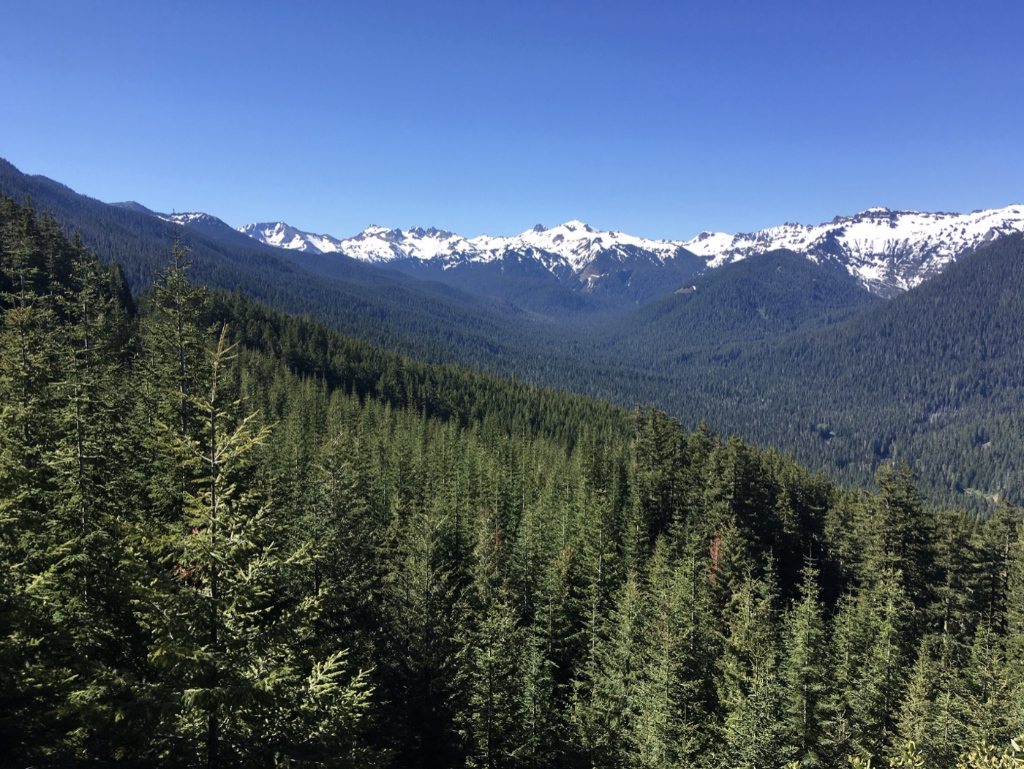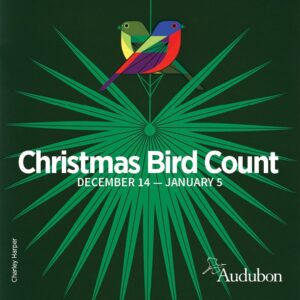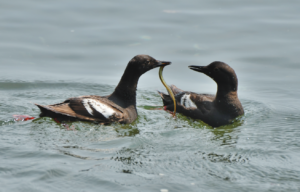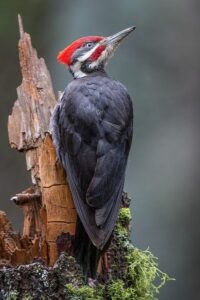Rachel Hudson – June 27, 2021
Map: Taidnapam Park; White Pass; Sand Lake Trail #60; eBird: Taidnapam Park; White Pass
SEVERAL WORDS OF CAUTION
The mountains in East Lewis County are beautiful and majestic places to visit. However, there are several important precautions I strongly recommend anyone heading out there to take careful note of:
- The mountains, no matter what time of year, are still the mountains. They are wild and potentially very dangerous. Always carry the 10 Essentials with you or near you at all times. (Navigation, hydration, nutrition, insulation, fire, first aid, tools, illumination, sun protection, shelter).
- The mosquitoes there, should you be anywhere near water or melted snow, are apocalyptically nightmarish, and they mean business. They are unafraid of “natural” repellents and are fast and tenacious, able to keep up with and bite a moving target with ease. As much as I dislike poisons, using powerful repellents with DEET work well for shorter periods. Expect continuous clouds of hundreds to thousands per yard in many areas.
- Avoid weekend travel at this time of year. Please. I cannot stress enough how crowded the mountains will get (and already are), even the more remote areas, during the summer.
- BE AWARE OF YOUR SURROUNDINGS. In one area where I tend to camp in June, I have found tracks from several cougars throughout the vicinity. Bears are also present in the mountains. Though attacks from these animals are incredibly rare, be alert and watchful for them. Also, year-round (especially in winter and spring, though), watch for elk on the highway. They are common and enjoy lounging in yards and fields everywhere along the road, crossing it frequently night and day.
With those precautions out of the way, let’s get to birding!
I will admit, my attempts to bird out in East Lewis County this month were not as fruitful as they could have been. I made three total trips out there in the past few weeks, each having its own slew of setbacks. So, for this DIY report, I’ll add in some info from past trips as well. Each place I list is free to access, though only the pullouts and scenic viewpoints are (mostly) ADA-friendly.
My first trip out was to a spot near Taidnapam Park, on the East end of Riffe Lake, along Highway 12. Though Taidnapam itself is a neat little park to explore, I prefer to bird in less well-known areas, so the spot I will discuss is around a tiny, 2-3 car gravel parking area on the right side of the intersection of Champion Haul Road and Glenoma Road. From Highway 12, turn right onto Kosmos Road, then take the first sharp left onto Champion Haul Road. Follow it for just under a mile; there, Glenoma Road begins on your left, but instead of taking it, turn right onto a narrow gravel road. At the end of this very short road is a place to park. From there, adventure awaits!
The area is loosely known just as “the East end of Riffe Lake”; I’m not sure if it has a proper name. You are free to head toward the lake from that parking area along an abandoned and half nature-reclaimed road, a distance of just under a mile from the parking area to where the half-present road ends at the lake. The scenery is to die for (overall in the mountains, birds can become an afterthought when met with such splendor).
Birds to look for here include Savannah Sparrows in the field and along the desiccated road, Bank Swallows over the field, Western Meadowlarks on random small trees and bushes, and Lazuli Buntings at the far end in the young deciduous trees. Many other species will call this area home here at different times of year; the trees around the roads’ intersection host many warblers during migration.
Perhaps my most exciting bird of that trip was a random and unexpected female Indian Peafowl walking slowly along the bushes at the side of the gravel road at the entrance. My main setback here was rain; I had scheduled to go there on what was perhaps the windiest and rainiest day there in months.
On my next trip, I scouted the White Pass area for snow depth at some places I would be staying soon. This time, the weather was lovely, but roadwork stopped me from going to White Pass itself; the place where I had intended to bird was instead covered with construction vehicles and stopped traffic from the one-lane road. Normally, White Pass on the Lewis County side (Yakima County begins there, also) can be fun for Cassin’s Finches, Steller’s Jays, Common Ravens, and Yellow-rumped Warblers.
Instead of White Pass, I stopped at some pullouts, as well as the trail I would be hiking on the following week. I highly recommend pulling over at every pullout you can on the way up White Pass along Highway 12. Not only are the sights breathtaking, but the sounds are enchanting. There, you can hear songs from Pine Siskins, Yellow-rumped Warblers, Golden-crowned Kinglets, Evening Grosbeaks, Red-breasted Nuthatches, and, most excitingly for me, Hermit Thrushes. They are the main stars of the mountain soundscape in the summer. In the lowlands, we don’t get the pleasure of hearing Hermit Thrushes sing, as they migrate away to the mountains for breeding season each year. But the mountains in summer are alive with the sound of musical Hermit Thrushes. Their odd, whistled-and-warbled songs echo around the forests and are a treat to hear.
I should perhaps mention that much birding in the dense forest is done by ear, rather than by sight. It is hard to see many birds when much of the landscape is blanketed by dense evergreen forests and the parts that are not covered by that blanket are instead thick with bare rocks and snow.
My final destination for the month was Sand Lake Trail #60, an extremely difficult trail at the end of Forest Road 1284. This road in and of itself is hazardous, and I strongly recommend a car with high clearance in order to carefully climb past the many holes, rockslides, ditches, and fallen trees throughout. I personally moved lots of the larger stones from several rockslides but they continuously topple down the slopes so be wary.
Sand Lake Trail #60, which begins on the right side of 1284 just before the end of the road as you’re heading up, is incredibly steep and challenging but many birders make the bodily sacrifice required to reach the top because of a special feature in that area: the burn. Years ago, there was a prescribed burn at the summit and the landscape is a hauntingly beautiful array of ghostly white trees, fallen and standing. It is here that rare birds such as American Three-toed Woodpeckers, Black-backed Woodpeckers, and Mountain Bluebirds can be found. On my previous trip several years ago, I encountered all three species, but this year, I camped for four days in and around the burn zone and only encountered Mountain Bluebirds out of those three. Seeing Mountain Bluebirds anywhere else in Lewis County can be tricky, if not impossible. These beautiful sky-colored birds breed every year in the burn at the top of the trail, and it’s an incredible treat to hear them call and watch them hunt (and, if you’re there at the right time, watch them take their skillfully caught insects to their babies in the cavities woodpeckers have made in the white skeleton trees).
I always camp there because I’ve learned that the most activity in the area comes before sunrise. On this month’s excursion, I got to hear all the Mountain Bluebirds singing at the same time… from 3:30 AM to 4:30 AM, almost precisely. The rest of the day, they only called as they hunted, no songs. A pair of Townsend’s Solitaires were staking a claim to a territory near what I have called the “Siskin Pond” in the middle of the burn; a family of Canada Jays were often making their rounds; mournful Clark’s Nutcrackers cried in treetops in the mornings; Cassin’s Finches sang beautifully here and there; a distant Sooty Grouse hooted; Olive-sided Flycatchers vocalized nonstop and more common birds like Dark-eyed Juncos, Tree Swallows, Red-breasted Nuthatches, Varied Thrushes, and Pine Siskins were omnipresent. My favorite encounter of the trip was inside the forest, near the two ponds I have deemed the “Frog Ponds”. A female Great Horned Owl called and flew right past me as I stood over the water, close enough for me to touch her wingtips if I had reached out.
There are plenty of other reasons to visit the burn: mammals such as Black-tailed Deer, Roosevelt Elk, Golden-mantled Ground Squirrel, and Yellow-pine Chipmunks are common. If you’re into wildflowers or butterflies, there’s plenty of lupine, violets, beargrass, and more carpeting the burn and providing nectar for Silvery Blues, Two-banded Checkered Skippers and larger fritillaries, swallowtails, and more.
Sand Lake Trail does connect with the Pacific Crest Trail and passes by Sand Lake and Deer Lake. These areas are better accessed from the trailhead on the east side of White Pass in Yakima County but I have never been to that trailhead. However, Sand Lake Trail is unlikely to be traversable the full distance until later in July or August, as snow levels on the trail are irregular and I encountered snow fields in the forest that were still 4-5 feet deep. My main setback here was the intense heat. The temperatures soared to the mid-80’s and higher during my stay, limiting activity overall, but it melted massive quantities of snow and dried up smaller pools before my eyes.
East Lewis County is full of places to go; this does not even scratch the surface. There are other unique places to stop, such as Knuppenburg Lake (one of the only places to find breeding Barrow’s Goldeneyes in the county) just before White Pass, Thompson Road (shown as Lake Creek Road on Google) just past Packwood (for House Wrens), and the famous Peters Road just before Randle (for a variety of interesting birds). The wetlands around Peters Road have hosted nearly 150 species of birds, with past summer rarities including Yellow-breasted Chat, Gray Catbird, and Indigo Bunting! In fact, a Yellow-breasted Chat was just reported there last week. It’s always worth a look; there should be a small area to pull off the road just over half a mile down. Walk north back along the road and listen and look for birds hiding in whatever may be left of the water there after this heat wave.
Birding in this area is challenging, but the rewards always have the potential to be great. Remember that even if you don’t see the birds you’re looking for, you can take in the scenery around you! It’s glorious, refreshing, and magnificent. Stay safe and have fun!
BEFORE YOU GO:
Before heading off for a birding adventure, here are some things to consider –
1. It’s always best to have a partner with you – both to maximize the joy and to minimize the risks. BHAS cannot ensure that these locations are totally safe.
2. Don’t forget to bring your mask and hand sanitizer. Have your mask handy and put it on when passing another person not in your party.
3. Leave valuables at home.
4. Check the weather and the bird reports before heading out. An easy way to check what birds have been seen is through Birder’s Dashboard http://birdingwashington.info/dashboard/. It is a simple way to research a species, place, or checklist.


